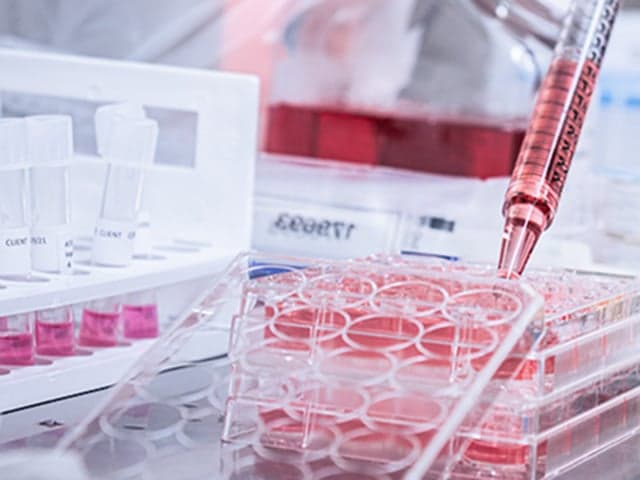Using Orbitrap LC-MS for Bioanalysis
This article by Element discusses the advantages of using Orbitrap LC-MS platforms for the bioanalysis of biologics in complex tissue matrices. It highlights the superior sensitivity and resolving power of quadrupole-Orbitrap mass spectrometers, positioning them as a robust alternative to traditional ligand binding assays.
The quantitative analysis of biologics in animal tissues has been traditionally performed with ligand binding assays (LBAs), but this approach can be complicated by the complexity of tissue matrices and/or poor reagent quality which can affect the performance an LBA platform.
In the past 10 years, liquid chromatography mass spectrometry (LC-MS) platforms for bioanalysis have been developed as a complementary approach to LBAs. However, LC-MS has increasingly become widely accepted as a sensitive, selective, and robust approach to the bioanalysis of biologics from both a scientific and regulatory standpoint.
The U.S. Food and Drug Administration (FDA) encourages the use of alternative technologies, and orbitrap mass analyzers offer some of the best sensitivity and resolving power for the quantitation of biomolecules in complex matrices. Quadrupole-Orbitrap mass spectrometers offer a robust and sensitive platform for the bioanalysis of tissue samples. Although LC-MS provides an alternative and complementary approach, there are several considerations the make in assessing whether LC-MS or LBAs are more suitable for your bioanalytical study.
Consider the quality of critical reagents
One of the major challenges in developing a ligand binding assay is sourcing high-quality antibodies and antibody conjugates specific to your drug or biomarker. Often there are no commercial sources for antibody pairs specific to a drug in development, forcing developers to design and produce their own antibodies, or leaving them to suffer poor selectivity and accuracy in their analysis.
LC-MS platforms do not suffer the same drawbacks, as the critical reagents required are generic and commercially widely available. Additionally, quadrupole-orbitrap mass spectrometers can be used to provide confirmation of reagent quality to complement LBA analyses.
Prioritizing selectivity and sensitivity
LBAs can be 5-10 times more sensitive than LC-MS for quantifying biomolecules in tissue matrices, which is critical in low-dosing pharmacokinetic (PK) studies where LLOQ requirements can be as low as 1 ng/g in tissue, but it is less critical in toxicology studies with much higher limits. However, LBAs only assess a single analyte per assay, and the selectivity of the reagents must be assessed, as antibodies have a high propensity for cross-reactivity.
Quadrupole-orbitrap mass spectrometers offer enhanced selectivity and are capable of multiplexing analyses. Therefore, when evaluating multiple antibody dosing, multiple analyses can be run at the same time without the need for costly and time-consuming reagent development.
Prioritizing throughput vs. accuracy and precision
One main advantage of LBAs is the capacity for high-throughput analysis, allowing for multiple samples to be run in parallel, greatly decreasing bulk sample analysis time compared to LC-MS workflows. However, method development can be a lengthy process, and unless large batches of high-quality reagents are available, batch-to-batch variability in reagent quality can lead to lower accuracy and precision between runs compared to LC-MS platforms. In contrast, LC-MS workflows typically boast high between-run accuracy and precision with significantly shorter method development time.
Complementary approaches improve outcomes
In general, each assay has its strengths and weaknesses, and it is important to evaluate each biologic individually to assess the critical quality parameters that need to be characterized. In many cases, a complementary approach is ideal where the strengths of each approach are harnessed to produce the best data possible. For example, pairing an LBA assay with an analytical workflow designed for the quadrupole-orbitrap mass spectrometer for a toxicology or pharmacokinetic study of an antibody drug substance.
Looking to the future
Predictably, as LC-MS workflows for bioanalysis of complex biomolecules continue to improve and become more routine, companies will increasingly be asked to support their regulatory filings with LC-MS analysis. Additionally, as pharmaceutical trends point towards increasingly complex drug products, customizable platforms will be essential to providing fast, efficient, and economical analytical workflows. In this rapidly evolving regulatory environment, LC-MS instruments, including quadrupole-orbitrap mass spectrometers will be critical in producing comprehensive characterization of biologics and other complex biomolecules. The Element team is constantly improving our bioanalytical approach to meet these changing demands. By evaluating each biologic drug individually, we can customize this approach to produce the best data possible to support our clients.
Partnering with an experienced lab
Element offers significant expertise in all stages of biologics R&D, from in-house protein biochemistry and molecular biology to cellular biology and QC experience, supporting the entire product development life cycle from early discovery through IND, BLA, and beyond. Our team of experienced scientists stays up to date with the latest scientific breakthroughs and regulatory guidance, ensuring your development and manufacturing programs meet rigorous safety, quality, and efficacy standards.
For more information about biologics analysis or to request a quote, contact us today.
Related Services

Cell Culture & Cell-Based Bioassay Services
Element provides expert cell-based bioassay services, including potency testing, method validation, and regulatory support, helping biopharmaceutical companies streamline drug development and approval.

Virology Testing
Element delivers GLP-compliant virology testing for antimicrobial products, helping companies meet global regulations, validate claims, and accelerate time to market with expert-led, reliable data.

